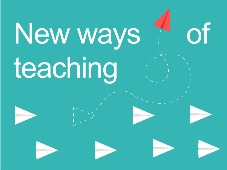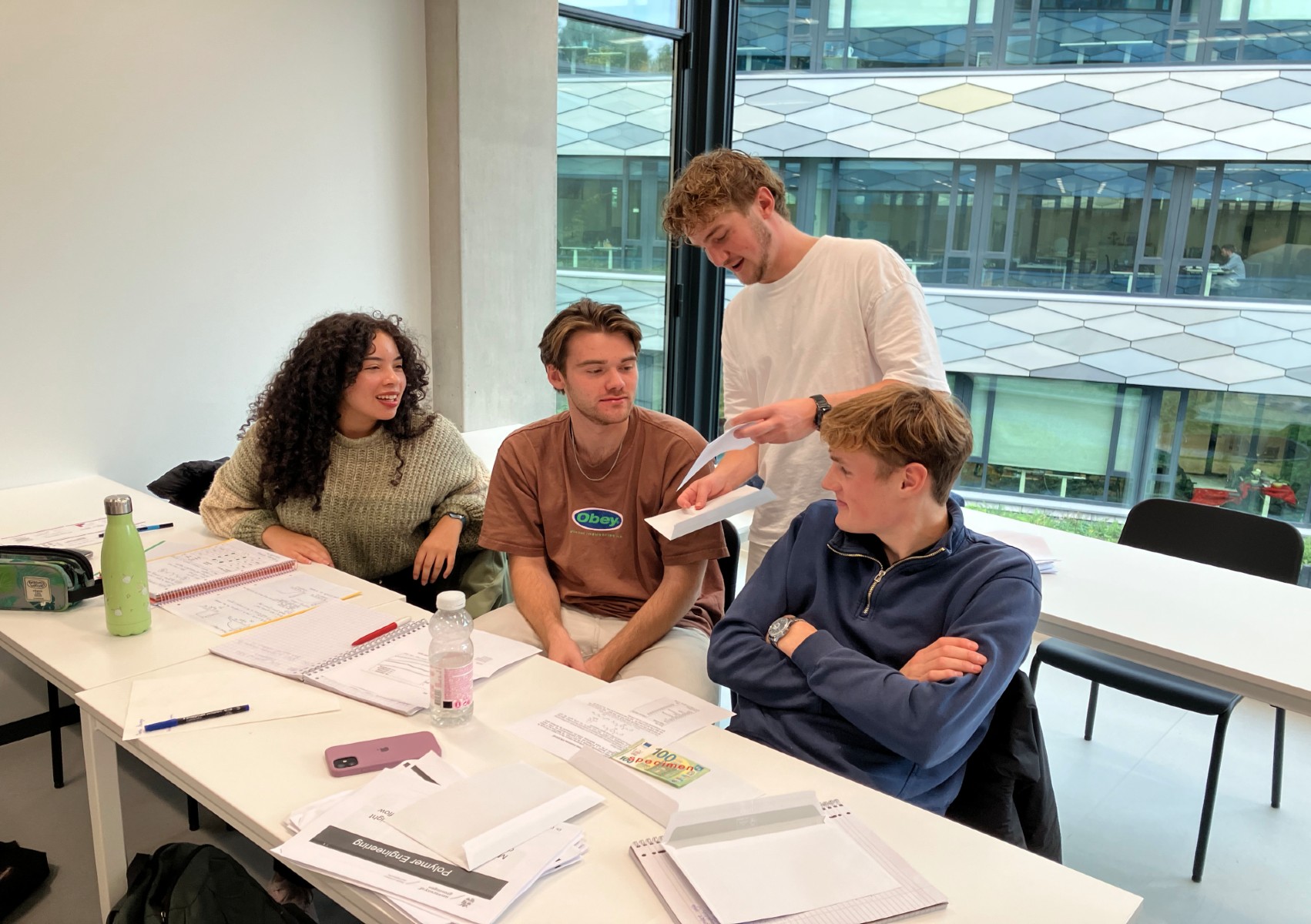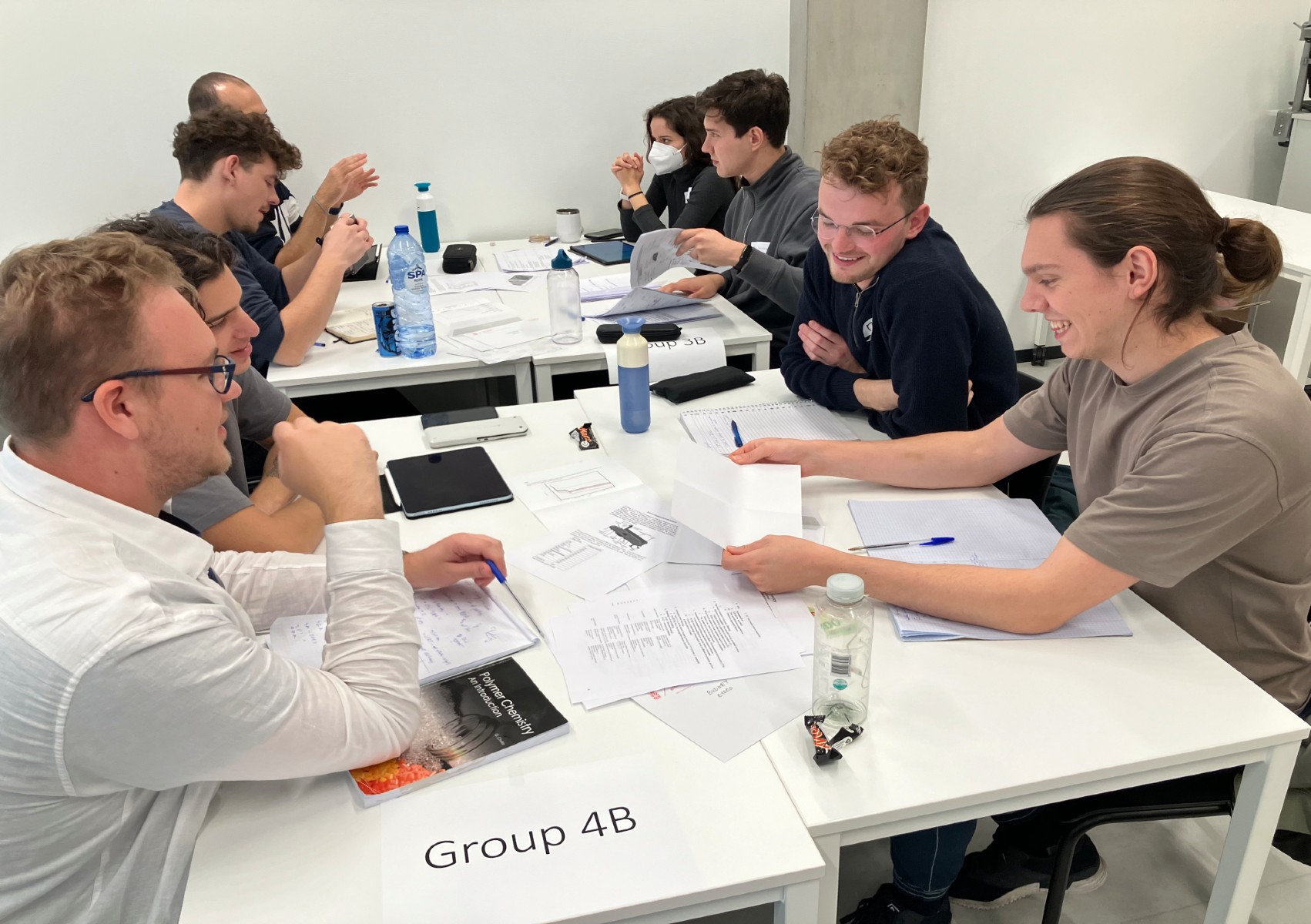Game-based assignment: combining fun and focus

In New Ways of Teaching, lecturers talk about their innovative, creative, and effective teaching initiatives. From unusual teaching methods to new technologies—anything is possible. How do these ideas arise and what impact do they have on students? This month: active engagement through serious gaming.

Conveying complex theories is not an easy task. Let alone encouraging students to apply these theories. Prof. Ranjita Bose, associate professor of Polymer Engineering, has experienced this first-hand. She developed a game-based assignment: a method that allows students to put theory into practice without being thrown into the deep end.
‘Engineering and many other subjects benefit from practical exercises to consolidate the learning. I noticed that students were often able to remember facts, but had difficulty applying their knowledge in practical scenarios or under pressure, such as during exams. This inspired me to develop a game-based learning assignment: a safe, low-risk environment where they could make mistakes, reflect, and learn without fear of failure. Simulating real-world constraints such as limited time and budget encourages strategic thinking and decision-making. I also wanted to improve collaboration and communication skills. In the game format, students must work together, discuss interpretations, and agree on next steps — skills that are essential for both an academic and professional career. It is a form of authentic assessment and also allows the teacher to access higher levels of Bloom’s taxonomy such as application, synthesis and consolidation.‘
Learning by doing
‘The aim of the game-based project is to help students apply course material by making informed decisions and discussing theory in small groups. Each group is given a case study to solve within a limited budget and time frame. They have to ‘buy’ analytical results one at a time, interpret them, and use only their notes — electronic devices are not allowed. This encourages students to apply the course material, synthesize knowledge, and use logical arguments to persuade their fellow students. The game introduces realistic time and budget constraints, making theory feel practical and decisions impactful. If students choose an irrelevant method, they receive an empty envelope making them reconsider and adjust their hypotheses. After the game, each student writes an individual report explaining how they used theory and literature to solve the case and reflecting on the group’s decisions. Overall, the assignment transforms passive learning into an active process, bringing theory to life.’

What is there to gain?
‘The game format encourages them to experiment and make decisions under realistic conditions, giving students more confidence in their analytical thinking. Since there are no penalties for wrong choices — only opportunities to reflect and adapt — students feel more comfortable making mistakes and learning from them.’
‘In addition to creating a safe learning space, the course teaches students a range of essential skills. These include critical thinking through interpreting data and making evidence-based decisions. Another key element is collaboration. Working together is central to the experience; working in small groups enhances communication and teamwork as students consider how to solve problems together. Time and budget constraints introduce elements of strategic planning, helping students to prioritize and manage resources. By relying solely on their notes and discussions with fellow students, they improve their ability to recall and apply theory under pressure — an essential exam and life skill.’
Engaged and motivated
‘Many students describe the activity as very valuable and engaging, and indicate that their knowledge has deepened and their general understanding of the subject has broadened. The collaborative aspect encouraged teamwork and provided an opportunity to solve problems in a group setting. The students appreciated the opportunity to exchange ideas that arose from the collaboration, and many enjoyed working together to tackle the case study.’
‘Overall, students found the assignment engaging and rewarding, highlighting its effectiveness for both individual learning and group interaction. The assignment brought theory to life and showed students the relevance of their academic knowledge in a simulated practical setting.’

Blowing away the cobwebs
‘What I value most is how the assignment brings theory to life. It transforms passive learning into an active, student-driven process. I consistently see that students are increasingly more motivated and more engaged in their learning process. The level of engagement and motivation during the assignment is much higher than during passive in lectures. Their feedback indicates that they find the experience both enjoyable and valuable, and that it prepares them well for exams and future careers. I have to admit it is just as much fun for me as it is for students.’
‘It is clear that the students are more engaged with the material, enjoy the process, and gain more confidence, which confirms the value of this approach. They remember the methods better, apply the theory more effectively, and feel better prepared for the final exam later in the course. Ultimately, the inspiration came from a desire to bridge the gap between theory and practice, making learning more dynamic, meaningful, and lasting, while keeping it enjoyable.’
More news
-
15 September 2025
Successful visit to the UG by Rector of Institut Teknologi Bandung
